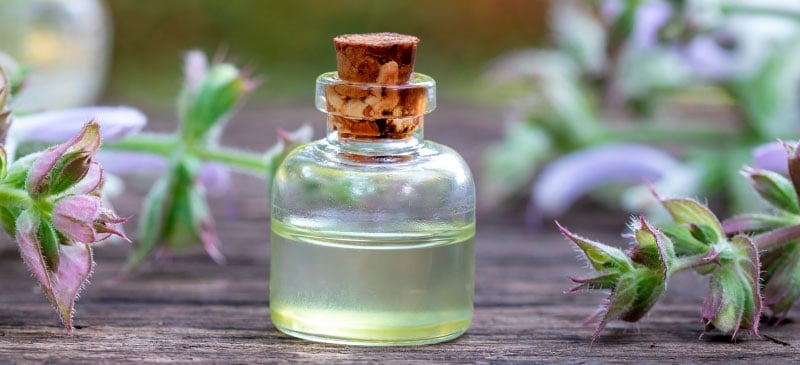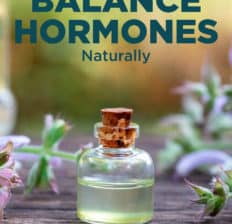This Dr. Axe content is medically reviewed or fact checked to ensure factually accurate information.
With strict editorial sourcing guidelines, we only link to academic research institutions, reputable media sites and, when research is available, medically peer-reviewed studies. Note that the numbers in parentheses (1, 2, etc.) are clickable links to these studies.
The information in our articles is NOT intended to replace a one-on-one relationship with a qualified health care professional and is not intended as medical advice.
This article is based on scientific evidence, written by experts and fact checked by our trained editorial staff. Note that the numbers in parentheses (1, 2, etc.) are clickable links to medically peer-reviewed studies.
Our team includes licensed nutritionists and dietitians, certified health education specialists, as well as certified strength and conditioning specialists, personal trainers and corrective exercise specialists. Our team aims to be not only thorough with its research, but also objective and unbiased.
The information in our articles is NOT intended to replace a one-on-one relationship with a qualified health care professional and is not intended as medical advice.
Essential Oils to Balance Hormones Naturally
January 21, 2025

Did you know that certain essential oils can help naturally balance your hormones and that specific oils can benefit progesterone and estrogen levels, improve thyroid hormones, and help naturally boost low testosterone? It’s true — so what are the best essential oils for hormones?
Keep reading to find out!
Essential oils for hormones
Essential oil uses continue to expand, as they can be used to help treat so many health issues and improve so many aspects of your health. For the sake of using essential oils for hormones and achieving balance, there are five main essential oils we’re going to cover: clary sage, thyme, rose, geranium and sandalwood essential oils.
1. Clary sage oil
A 2014 study published in the Journal of Phytotherapy Research found that inhalation of clary sage oil had the ability to reduce cortisol levels by 36% and improved thyroid hormone levels. The study was done on 22 postmenopausal women in their 50s, some of whom were diagnosed with depression, and at the end of the trial the researchers stated that “clary sage oil had a statistically significant effect on lowering cortisol and had an anti-depressant effect improving mood.”
This is just one of the many studies proving clary sage oil benefits hormones.
The biggest benefit of clary sage is that it helps balance out estrogen production in the body. A lot of health issues today, even things like infertility, PCOS and estrogen-based cancers, are caused by excess estrogen in the body — in part, because of our consumption of high-estrogen foods.
Because clary sage helps balance out those estrogen levels, it’s an incredibly effective essential oil in helping a wide array of hormone imbalances. So, whether you’re looking for natural remedies for PMS cramps during the month or possibly already know you have excess estrogen in your body, clary sage is a great essential oil to consider adding to your essential oils for hormones regimen.
2. Thyme oil
Research discussed in the Proceedings of the Society of Experimental Biology and Medicine discovered thyme essential oil has progesterone-balancing effects.
Thyme oil benefits the body by improving progesterone production. Both men and a lot of women are low in progesterone, and low progesterone levels have been linked with infertility, PCOS and depression, as well as other imbalanced hormones within the body.
Improved progesterone makes thyme a great essential oil you can use to naturally balance out hormones in your body. Plus, it’s far better than turning to synthetic treatments, such as hormone replacement therapy, which can make you dependent on prescription drugs, mask symptoms while developing diseases in other parts of the body and often causing serious side effects.
3. Sandalwood oil
Of the top essential oils for hormones, sandalwood essential oil is very effective at balancing out testosterone levels in both men and women. Sandalwood has actually been used as a natural aphrodisiac, making it a desired ingredient in men’s cologne, as well as certain perfumes, for years.
Also, it really has an amazing scent. For men with low testosterone, adding a few drops of sandalwood oil into your homemade deodorant or your own homemade lotion isn’t just a great way to smell good — it’s also a great way to get some extra health benefits of improving your libido and hormones.
4. Rose oil
Rose oil is believed to strengthen the uterus, potentially addressing menstrual cycle issues. In menopausal women, it may improve mood and reduce hot flashes by balancing hormones.
Research has indicated that rose essential oil may influence hormonal balance in humans.
A study published in Neuro Endocrinology Letters examined the effects of olfactory exposure to various essential oils on salivary estrogen concentrations in perimenopausal women. The findings revealed that exposure to rose otto essential oil led to a significant increase in salivary estrogen levels compared to a control odor.
Additionally, a study published in the International Journal of Gynecology & Obstetrics investigated the efficacy of aromatherapy using essential oils of Rosa damascena for managing premenstrual syndrome (PMS). The results suggested potential benefits, indicating that rose essential oil might help alleviate PMS symptoms, which are often linked to hormonal fluctuations.
These studies suggest that rose essential oil may have a role in modulating hormonal levels and alleviating symptoms associated with hormonal imbalances.
5. Geranium oil
Similar to rose oil, geranium oil may help balance hormones, support menstrual cycle regularity in perimenopausal women, and improve mood. Research indicates that geranium essential oil may influence hormonal balance in humans.
In the study published in Neuro Endocrinology Letters that examined the effects of olfactory exposure to various essential oils on salivary estrogen concentrations in perimenopausal women mentioned above, exposure to geranium essential oil led to a significant increase in salivary estrogen levels compared to a control odor.
Another clinical trial investigated the effects of geranium aromatherapy massage on PMS symptoms. The study concluded that geranium aromatherapy massage improved both physical and mental PMS symptoms, suggesting a potential role in hormonal regulation.
These studies suggest that geranium essential oil may help balance hormones, particularly by influencing estrogen levels and alleviating symptoms associated with hormonal fluctuations.
How to use
One of my favorite essential oil uses is to simply mix some coconut oil with the essential oil itself and rub it on different areas of the body. And, because essential oils are so small molecularly, they can actually be absorbed into your body through your skin, so you can get full body effects simply by putting essential oils for hormones directly on the skin.
Lavender oil and chamomile oil are effective at reducing stress, therefore naturally lowering cortisol levels, which is very important for the body when it’s trying to overcome disease.
In general, one of the best essential oils for thyroid function and autoimmune issues is frankincense oil, which reduces inflammation, also helping to lower those cortisol levels.
Thus, you can combine the essential oils for hormones above with lavender, chamomile, frankincense and more to balance hormones.
So again, if you want to have more balanced hormones, personally I recommend considering clary sage oil along with thyme oil and, specifically for men, some added sandalwood oil. You can just put a few drops on your hand and rub it on your skin, or combine them with some of your own personal-care products.
Risks and side effects
While essential oils offer potential benefits, it’s crucial to be aware of possible risks and side effects:
- Skin Irritation: Applying undiluted essential oils can cause irritation or allergic reactions. Always dilute oils with a carrier oil and perform a patch test before widespread use.
- Respiratory Issues: Inhaling essential oils directly can irritate the respiratory tract, leading to coughing or shortness of breath, especially in individuals with asthma or other respiratory conditions.
In addition, certain oils, such as citrus-based ones, can cause skin sensitivity to sunlight, leading to burns or rashes. Avoid sun exposure after applying these oils.
Final thoughts
- Incorporating essential oils into your wellness routine may offer support for hormonal balance. However, it’s essential to use them responsibly.
- Before starting any new treatment, especially if you have underlying health conditions or are pregnant, consult a healthcare professional and seek medical advice.
- Use high-quality, pure essential oils from reputable sources to reduce the risk of contaminants.
- Overuse can lead to adverse effects. Follow recommended guidelines for each oil.
- Some of the best essential oils for hormones include rose, geranium, clary sage, thyme and sandalwood oils.
- By staying informed and cautious, you can safely explore the potential benefits of essential oils for hormonal health.










